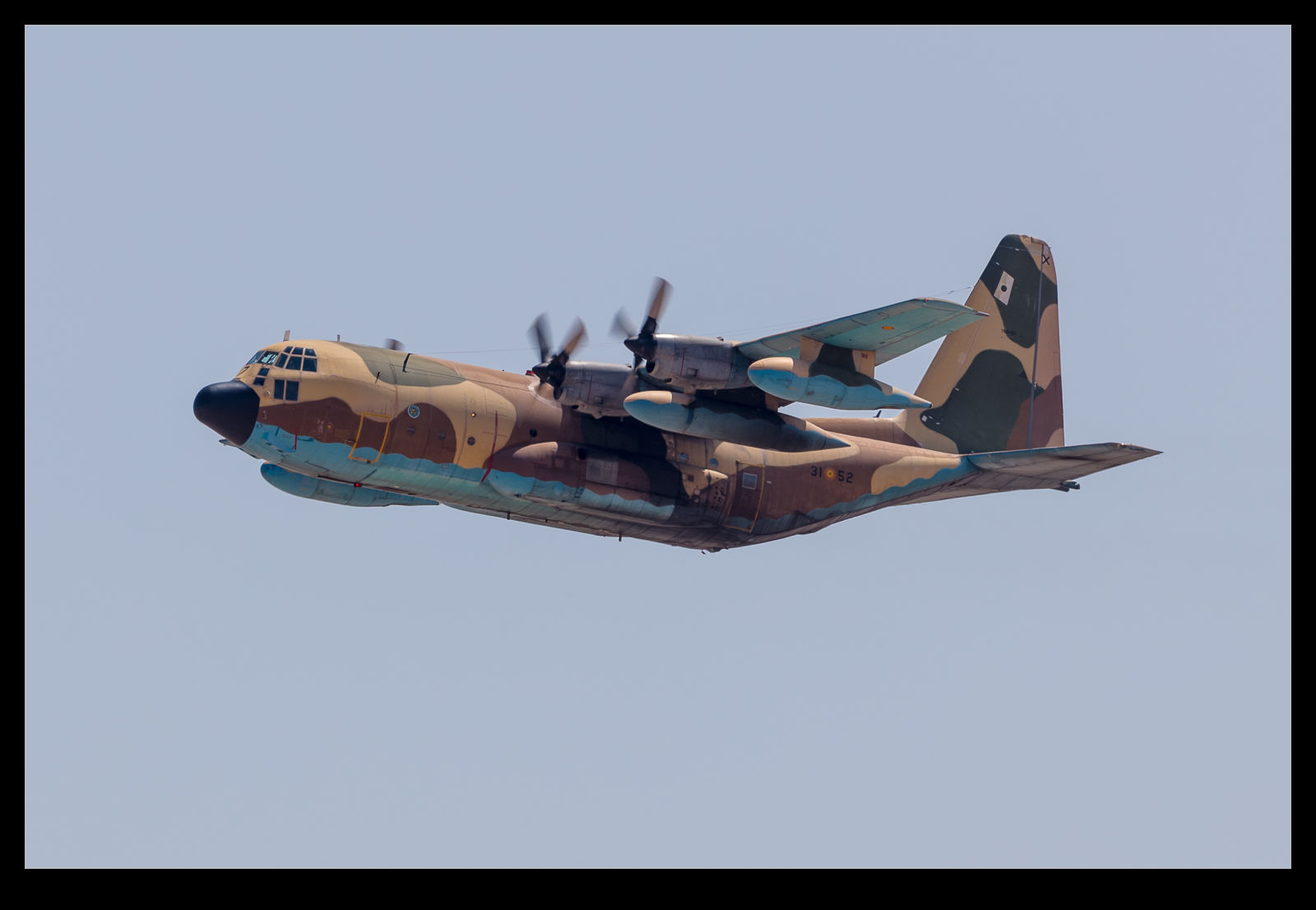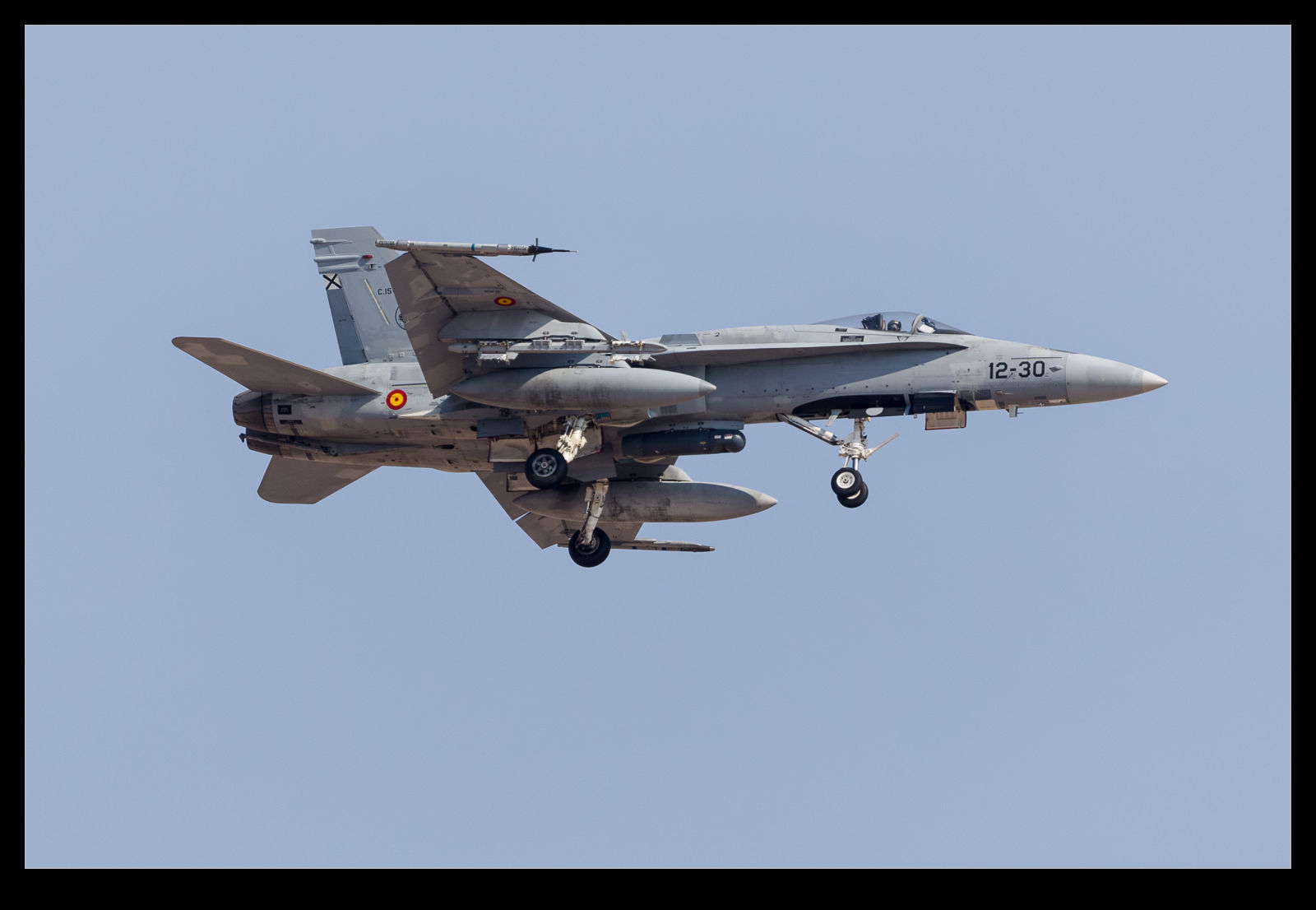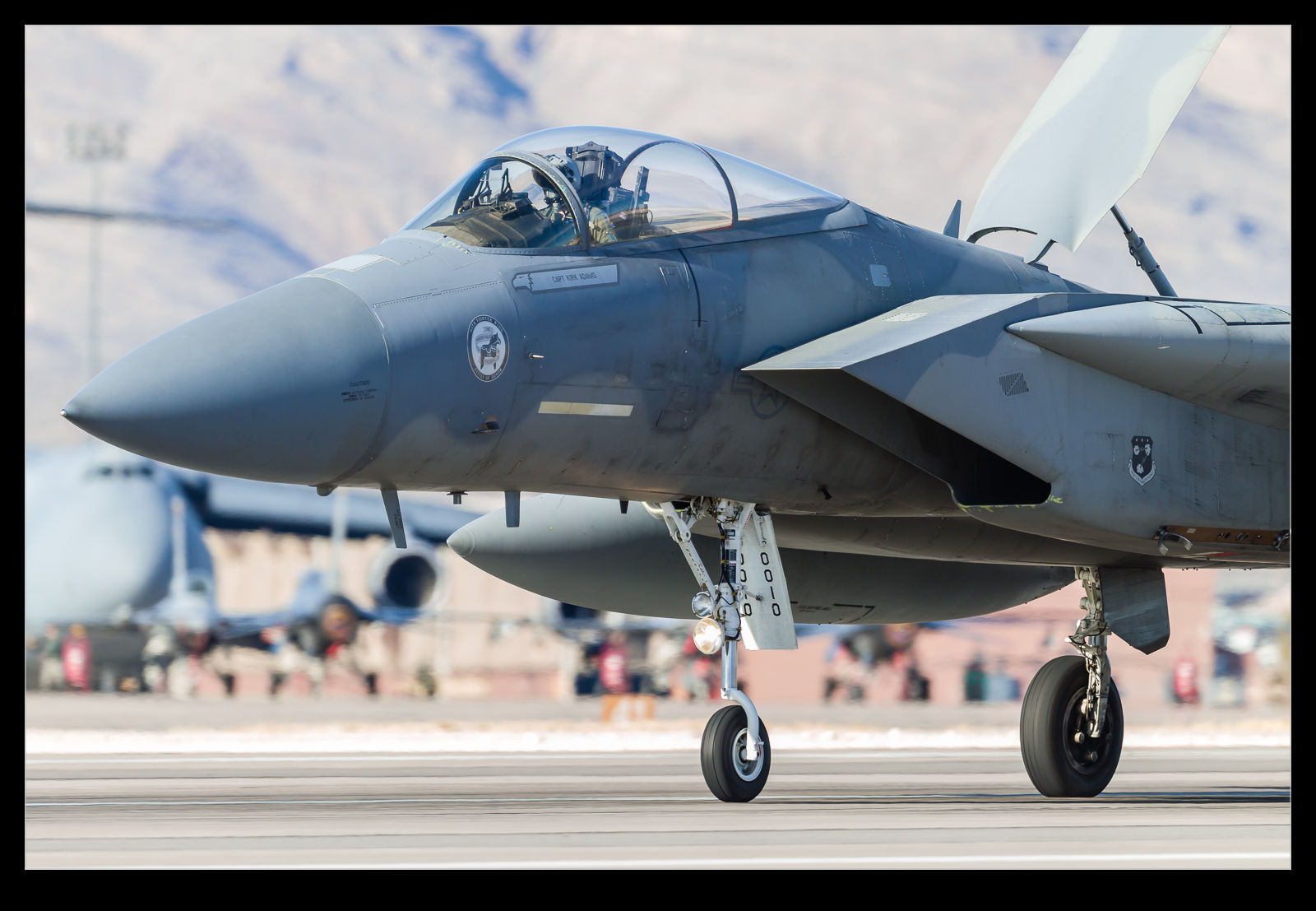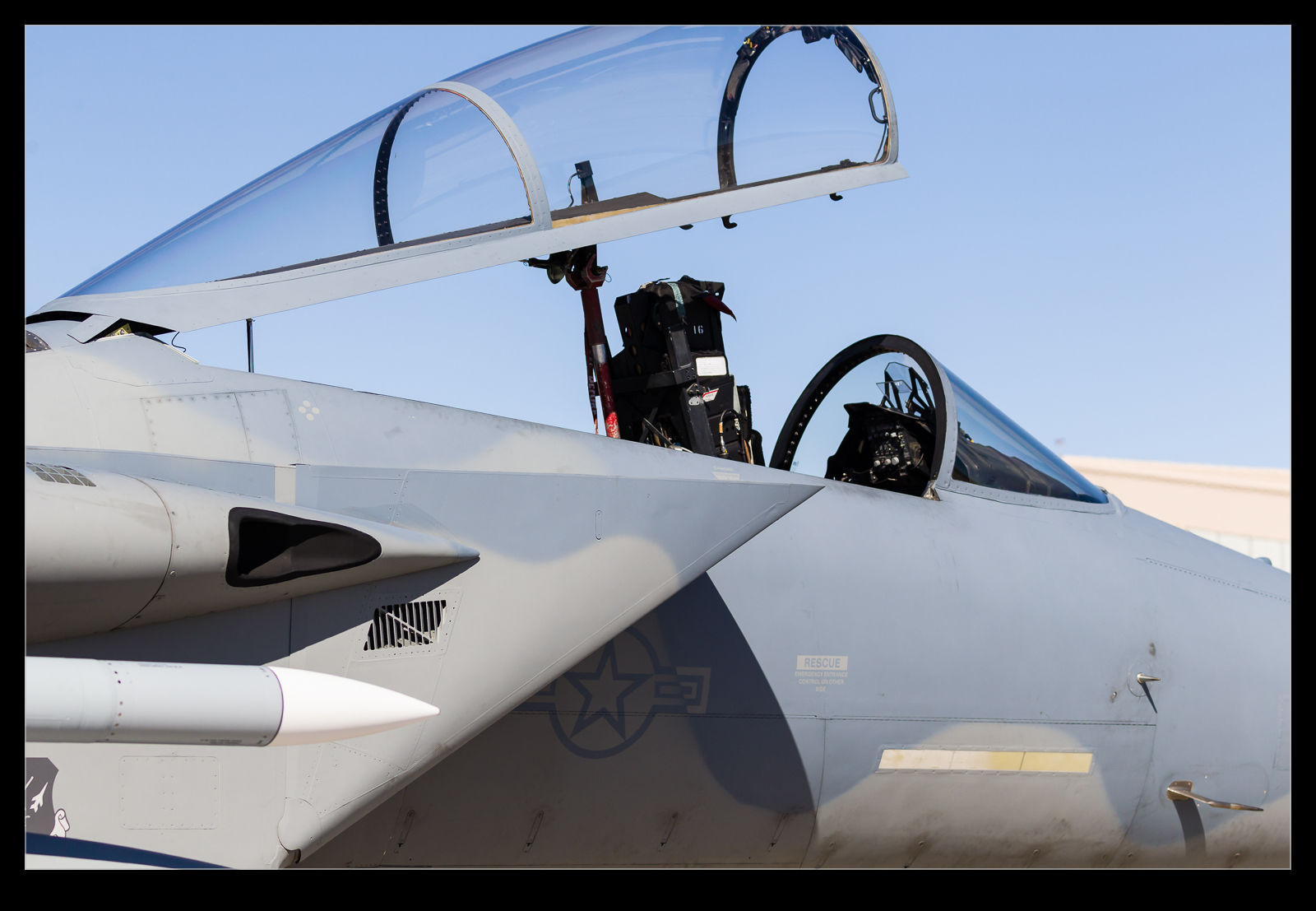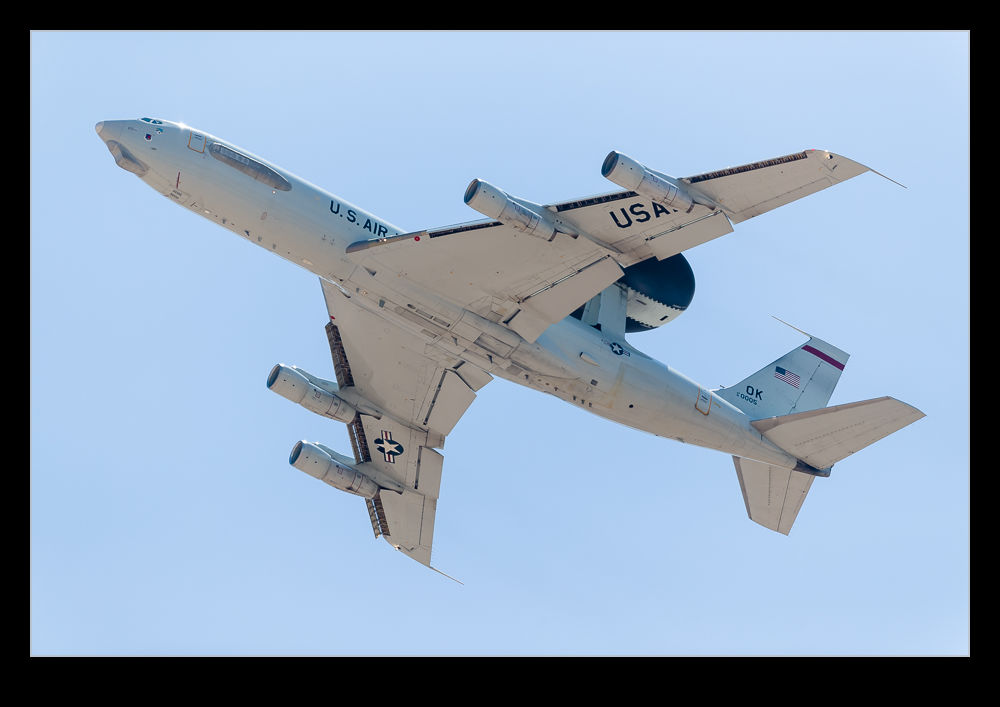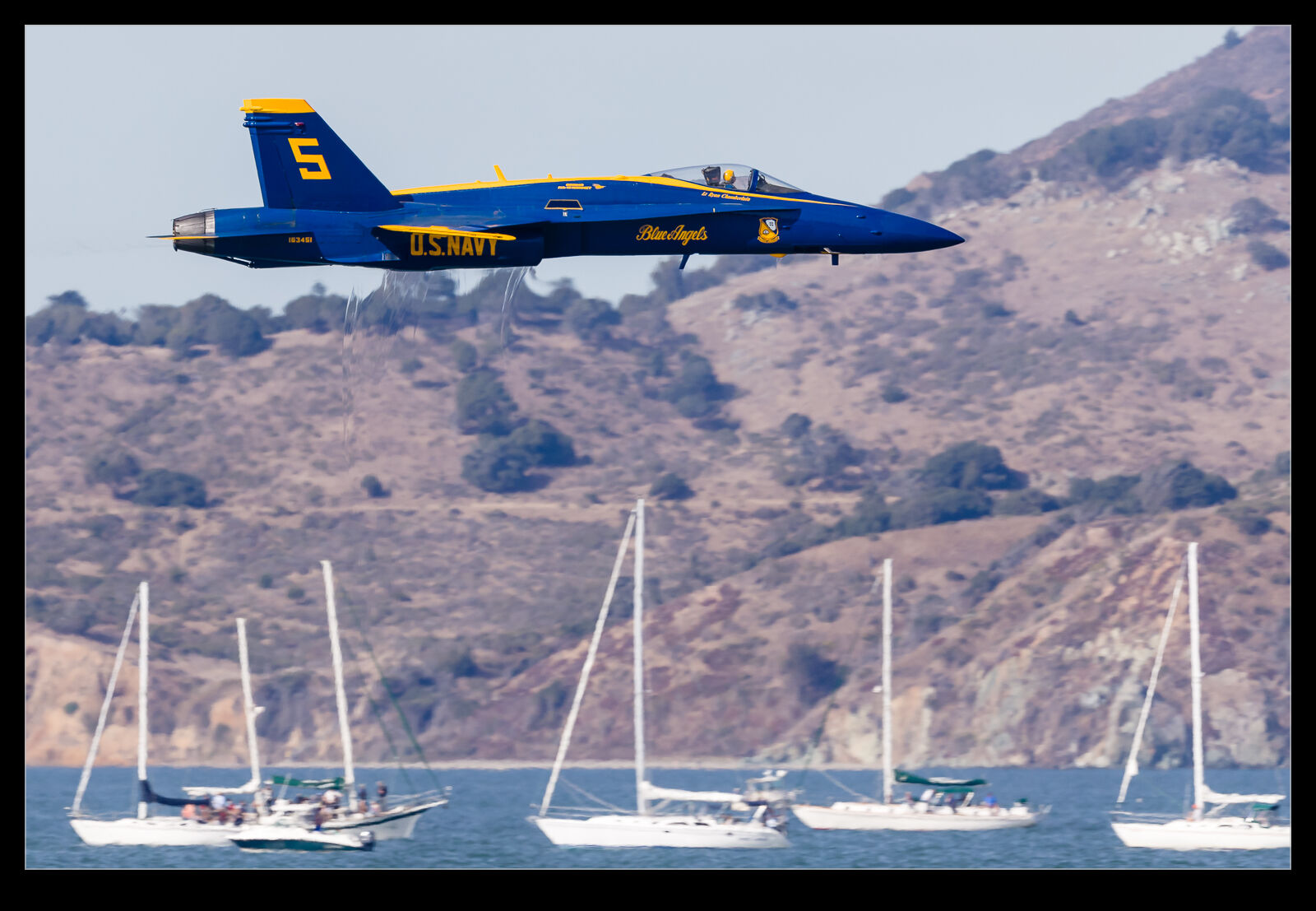 The Fleet Week air show in San Francisco is wrapped up by the Blue Angels. The sneak passes made by the pair are an opportunity to try and get something interesting. Since they display over the bay and the city is known for having high relative humidity, I am always hoping to get some good vapor shots. This time out, that wasn’t to be. The air seemed to be pretty dry and there was not a lot of vapor on show. However, the fast pass from left to right takes the jet in front of the hills and Alcatraz which provides some detail to show up the distortion caused by the shock-waves. The large number of boats and associated masts meant a clean shot was tricky but I got a couple I was pleased with.
The Fleet Week air show in San Francisco is wrapped up by the Blue Angels. The sneak passes made by the pair are an opportunity to try and get something interesting. Since they display over the bay and the city is known for having high relative humidity, I am always hoping to get some good vapor shots. This time out, that wasn’t to be. The air seemed to be pretty dry and there was not a lot of vapor on show. However, the fast pass from left to right takes the jet in front of the hills and Alcatraz which provides some detail to show up the distortion caused by the shock-waves. The large number of boats and associated masts meant a clean shot was tricky but I got a couple I was pleased with.
Category Archives: military
Hercules Tankers at Nellis
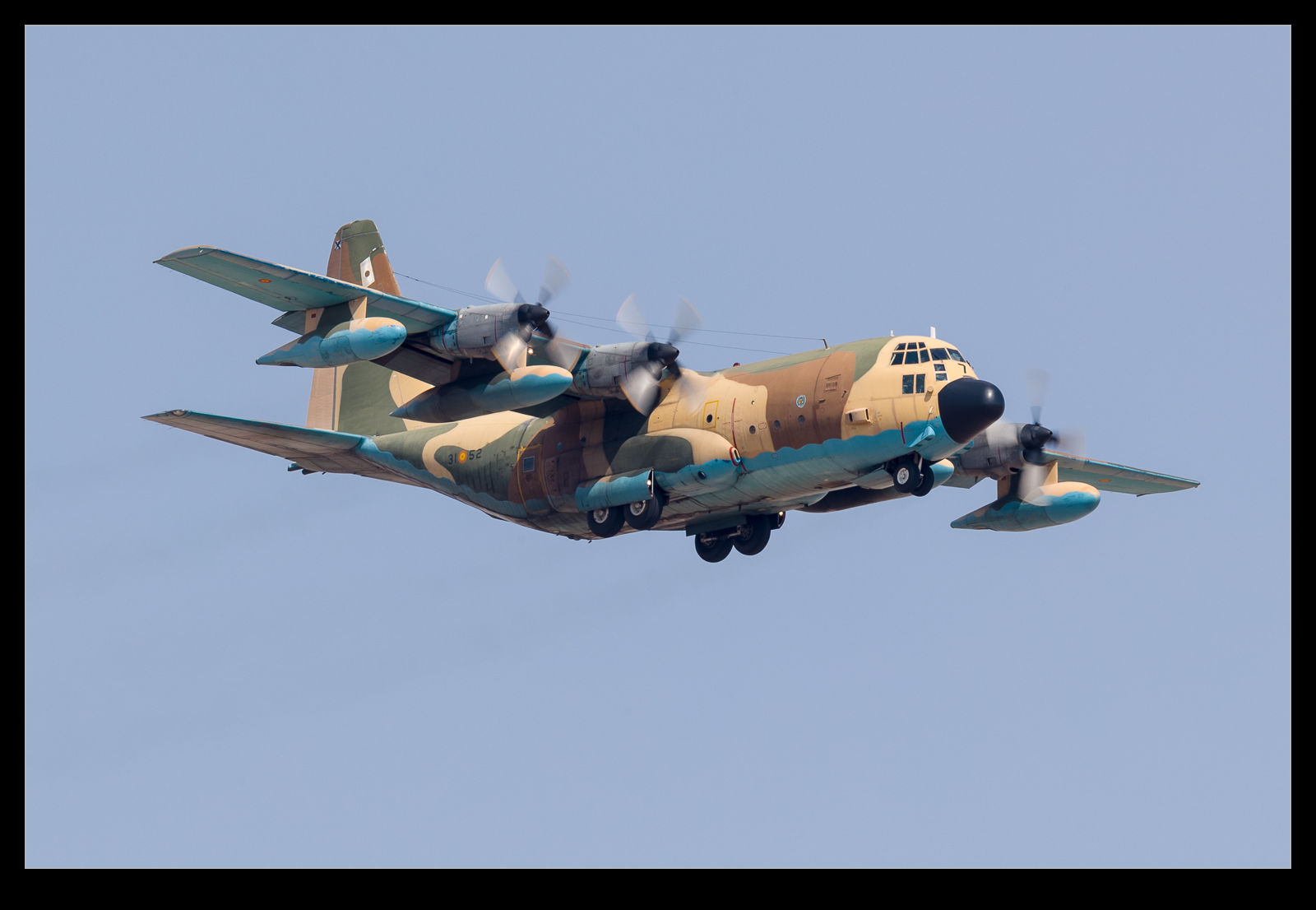 Red Flag 16-4 was a bit unusual in that tanker support was not what you normally see. No KC-135s were taking part. The Israeli Air Force had brought some 707s for tanking there jets. The rest of the tankers were KC-130s. An MC-130J showed up although I don’t know whether it was part of the exercise or just there coincidentally. The Spanish Air Force brought their KC-130s to support the Hornets. Seeing a camouflaged Herc is a nice change given how most of them are monotone these days. It doesn’t hurt that, since tankers tend to recover late, they came back as the light was getting very nice.
Red Flag 16-4 was a bit unusual in that tanker support was not what you normally see. No KC-135s were taking part. The Israeli Air Force had brought some 707s for tanking there jets. The rest of the tankers were KC-130s. An MC-130J showed up although I don’t know whether it was part of the exercise or just there coincidentally. The Spanish Air Force brought their KC-130s to support the Hornets. Seeing a camouflaged Herc is a nice change given how most of them are monotone these days. It doesn’t hurt that, since tankers tend to recover late, they came back as the light was getting very nice.
Customs Citation
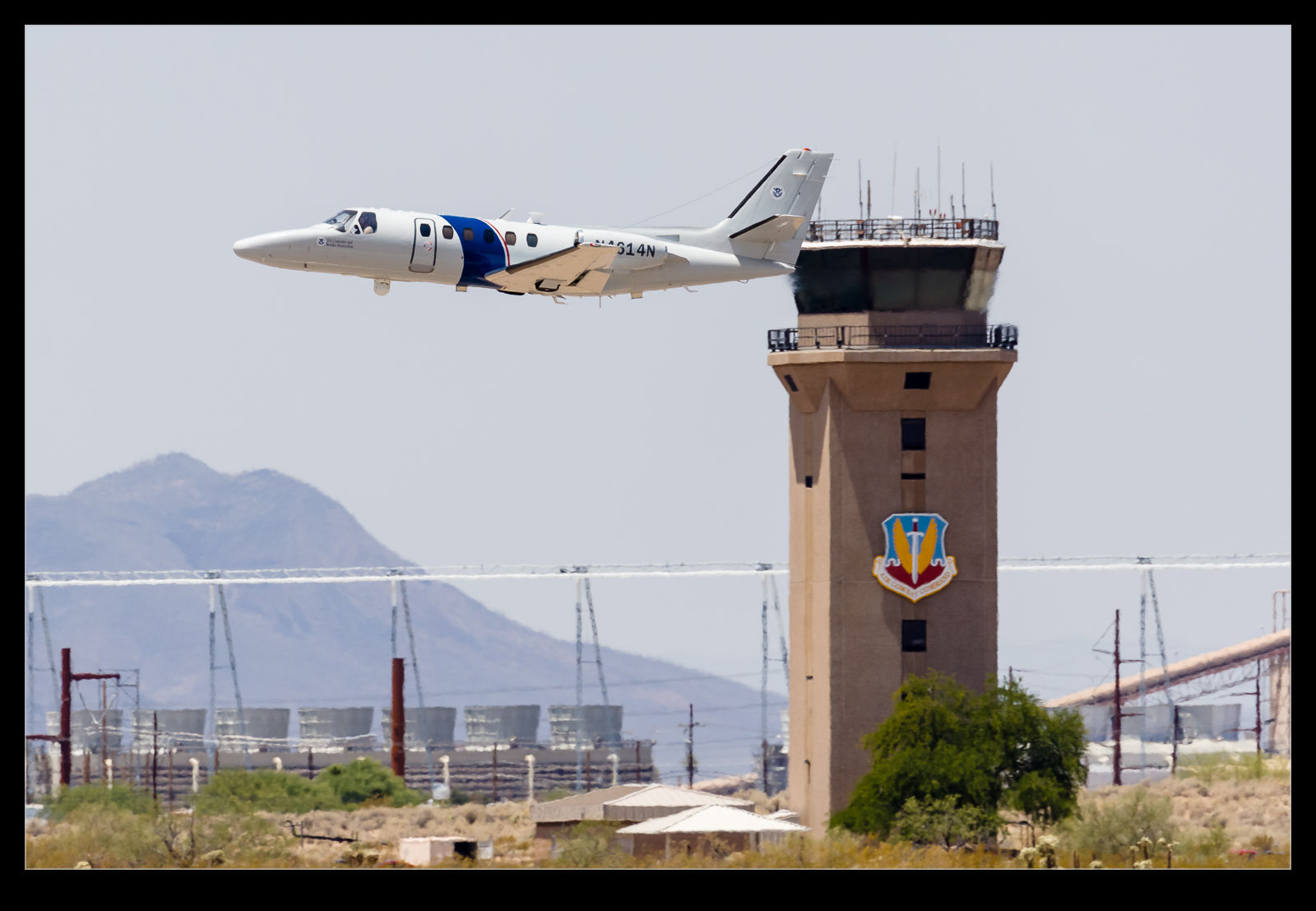 Cessna Citations are not the most exciting business jets. The original versions are particularly uninspiring with their simple design and unswept wing. Normally I might not even bother if I came across one. This example showed up at Davis Monthan while we were on the ramp and it obviously wasn’t a standard version. It belongs to the Customs people. I imagine it spends a lot of time looking at what is going on along the border. Flying out of Tucson would support that idea. I imagine the sensors on board are a lot more interesting than the plane itself.
Cessna Citations are not the most exciting business jets. The original versions are particularly uninspiring with their simple design and unswept wing. Normally I might not even bother if I came across one. This example showed up at Davis Monthan while we were on the ramp and it obviously wasn’t a standard version. It belongs to the Customs people. I imagine it spends a lot of time looking at what is going on along the border. Flying out of Tucson would support that idea. I imagine the sensors on board are a lot more interesting than the plane itself.
Vipers Sneaking up on Strike Eagle
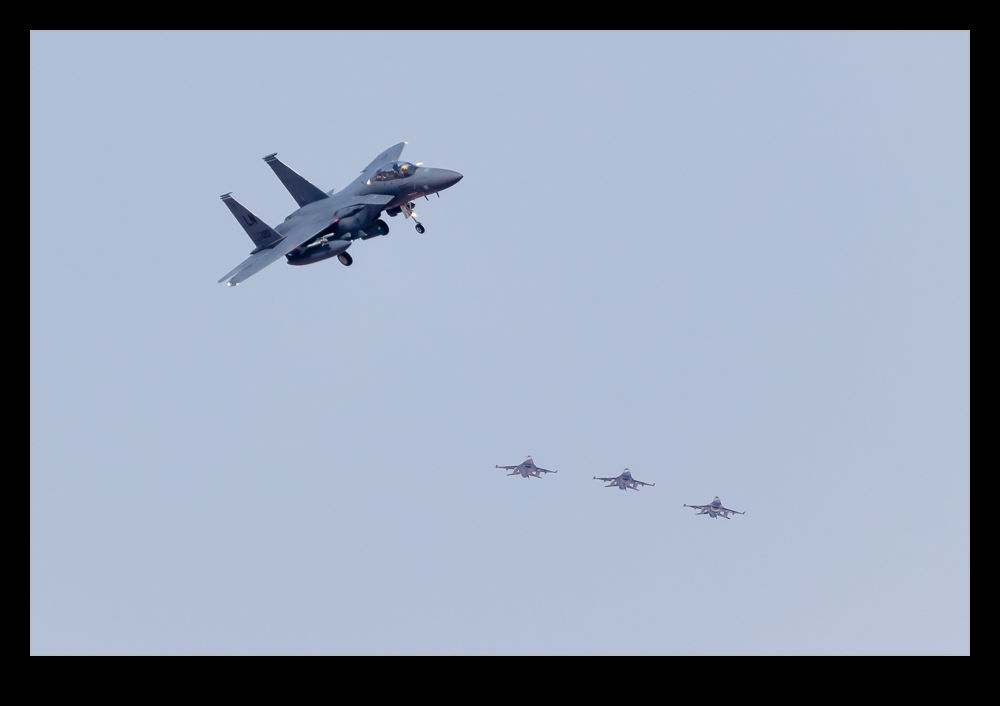 Before I say anything else, this shot is not original. I didn’t think of this and I certainly wasn’t the first to shoot it. Indeed, it is the exact opposite. This is a shot that I have seen from other people a bunch of times but that I have never achieved. The recovery for Red Flag has a lot of jets coming home at once. Jets will break into the pattern and will be turning final when more jets are coming in to the break. You can get jets coming in overhead directly behind the jet on final turn. It looks cool but I had not got it before. This time I got lucky. I don’t know whether I am pleased with the shot or just glad that I finally happened to get it!
Before I say anything else, this shot is not original. I didn’t think of this and I certainly wasn’t the first to shoot it. Indeed, it is the exact opposite. This is a shot that I have seen from other people a bunch of times but that I have never achieved. The recovery for Red Flag has a lot of jets coming home at once. Jets will break into the pattern and will be turning final when more jets are coming in to the break. You can get jets coming in overhead directly behind the jet on final turn. It looks cool but I had not got it before. This time I got lucky. I don’t know whether I am pleased with the shot or just glad that I finally happened to get it!
Spanish Hornets and Some Strange Patterns
 It has been a long time since I last saw some Spanish Air Force Hornets so I was glad to see them at Red Flag. They may not look very different to the Navy and Marine Hornets but still, some variety is worth it. It was the second week of the exercise so I would have expected everyone to be pretty familiar with the operations around the pattern. However, the Spanish guys seemed to have some different ideas.
It has been a long time since I last saw some Spanish Air Force Hornets so I was glad to see them at Red Flag. They may not look very different to the Navy and Marine Hornets but still, some variety is worth it. It was the second week of the exercise so I would have expected everyone to be pretty familiar with the operations around the pattern. However, the Spanish guys seemed to have some different ideas.
 They were certainly interested in keeping the patterns tight. I don’t know whether they convert to type with the Navy and are trained to fly tight or whether that is just their nature. However, on one occasion, the pilot came way inside the downwind line while another jet was flying that line and he was going to end up cutting them off. I guess he realized at the last moment because he turned left to get back out where he should have been. A bit strange to watch!
They were certainly interested in keeping the patterns tight. I don’t know whether they convert to type with the Navy and are trained to fly tight or whether that is just their nature. However, on one occasion, the pilot came way inside the downwind line while another jet was flying that line and he was going to end up cutting them off. I guess he realized at the last moment because he turned left to get back out where he should have been. A bit strange to watch!
Eagle Inlets
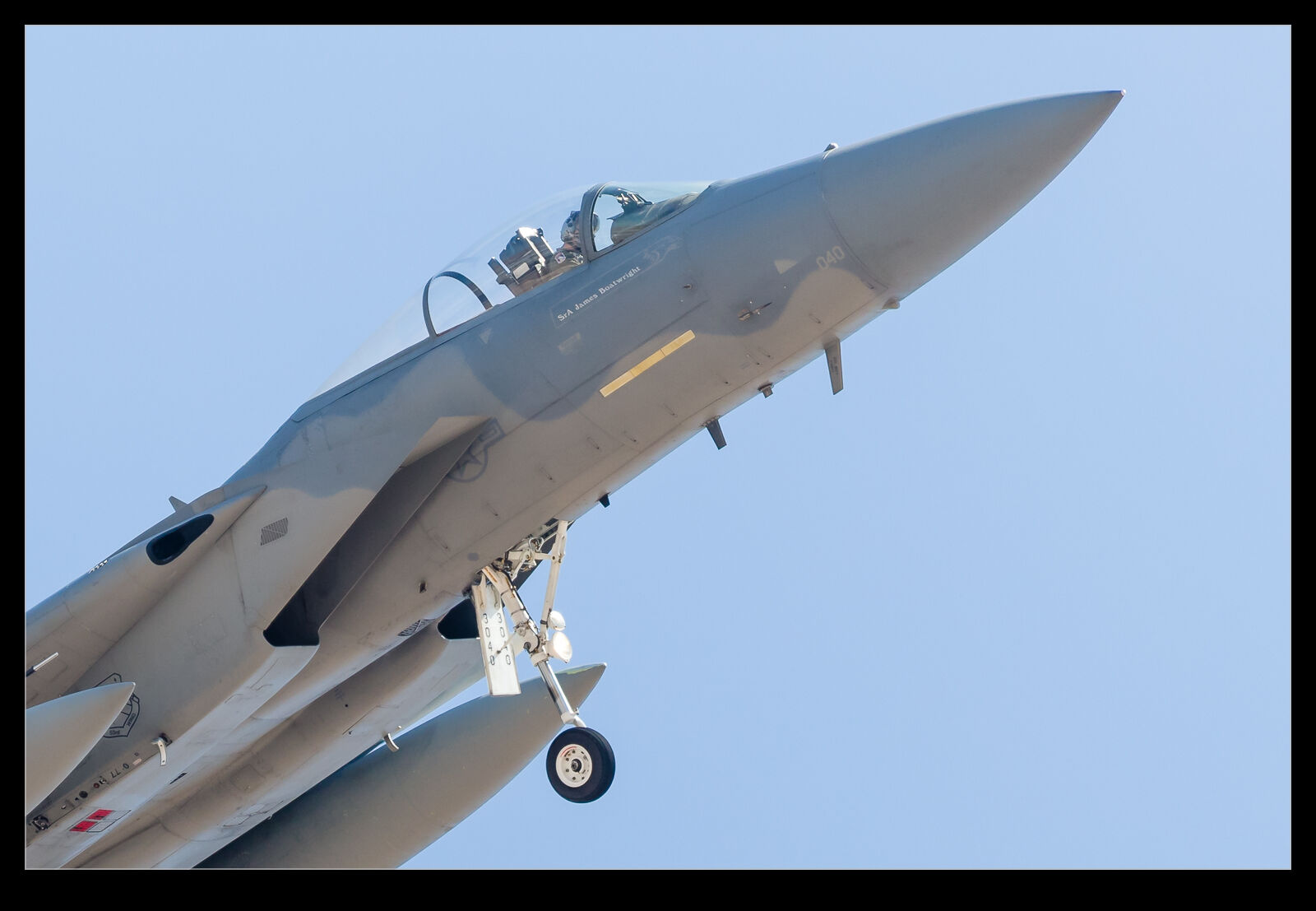 The F-15 came onto the scene in the 1970s and it has been a major force ever since. As a kid growing up fascinated with planes, the F-15 and F-14 were two of my favorites. They each had features I loved. One of the cool things about the F-15 for me was the inlets. Big ramp inlets were in vogue at that time. They combined an angled profile with complex ramps and doors to take flows from above Mach 2 down to subsonic speeds to feed the engines. (Interestingly the F-16 went with a simple pitot inlet and could still just about make Mach 2. It used the fuselage to redirect the air into the inlet rather than raking it.) The F-14 inlets were very sharply angled. The F-15 didn’t have such a sharp angle but instead took a different approach. The inlets rotated down towards the approaching air.
The F-15 came onto the scene in the 1970s and it has been a major force ever since. As a kid growing up fascinated with planes, the F-15 and F-14 were two of my favorites. They each had features I loved. One of the cool things about the F-15 for me was the inlets. Big ramp inlets were in vogue at that time. They combined an angled profile with complex ramps and doors to take flows from above Mach 2 down to subsonic speeds to feed the engines. (Interestingly the F-16 went with a simple pitot inlet and could still just about make Mach 2. It used the fuselage to redirect the air into the inlet rather than raking it.) The F-14 inlets were very sharply angled. The F-15 didn’t have such a sharp angle but instead took a different approach. The inlets rotated down towards the approaching air.
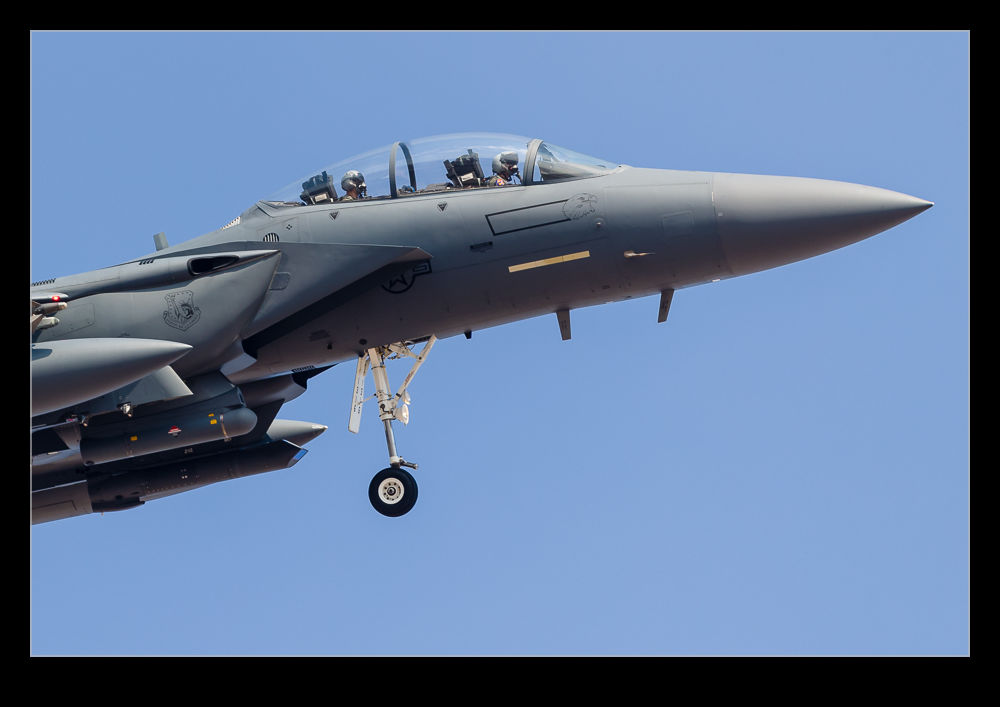 This always struck me as a cool feature and whenever I see F-15s now, I am always looking at the angle of the inlets. Since they are often at lower speeds when I get to shoot them, they are at higher angles of attack and this means the inlets are rotated down. McAir’s engineers did a great job of the joint so the top surface doesn’t look too discontinuous. I include a shot of a parked jet to show the difference. Even after all these years, I still get a kick out of this.
This always struck me as a cool feature and whenever I see F-15s now, I am always looking at the angle of the inlets. Since they are often at lower speeds when I get to shoot them, they are at higher angles of attack and this means the inlets are rotated down. McAir’s engineers did a great job of the joint so the top surface doesn’t look too discontinuous. I include a shot of a parked jet to show the difference. Even after all these years, I still get a kick out of this.
The Lonely Life of the AWACS
 The beginning and end of an exercise has a common theme. Long before the fighter start launching, an E-3 AWACS will lumber off the runway and head out towards the exercise area. It gets on station and sets up to direct the fight as the fast movers enter the range. It will support the whole mission and will guide the small guys back home at the conclusion of their missions. It will deal with any of the jets that have to change plans or abort. With everyone else back on the ground, the AWACS can finally come home. They are often the last jet back on the ground. Hopefully everyone outside will stay around for their recovery. You wouldn’t want them to feel neglected!
The beginning and end of an exercise has a common theme. Long before the fighter start launching, an E-3 AWACS will lumber off the runway and head out towards the exercise area. It gets on station and sets up to direct the fight as the fast movers enter the range. It will support the whole mission and will guide the small guys back home at the conclusion of their missions. It will deal with any of the jets that have to change plans or abort. With everyone else back on the ground, the AWACS can finally come home. They are often the last jet back on the ground. Hopefully everyone outside will stay around for their recovery. You wouldn’t want them to feel neglected!
Backseat Cameraman
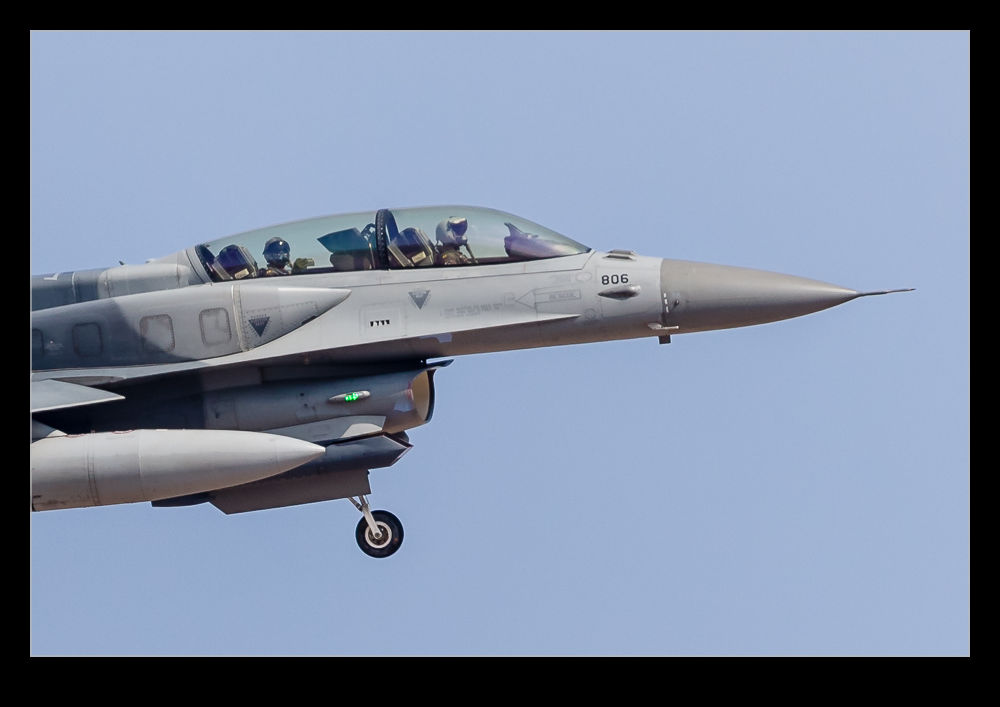 One of the fun things about looking through my pictures from a shoot is spotting things I didn’t notice at the time. Often it is pilots waving or looking like they are doing something different. This time, I was surprised to see a couple of the backseat guys in the jets with their cameras out. One of the places you would really like to be as a photographer in in the backseat of one of the jets getting shots as things happen. I guess the crews are not a lot different. I assume they are pretty busy during the main part of the mission. The recovery is a different story and the front seater is dealing with everything that counts. Time for the Guy in the Back to take in the scenery and grab some shots of the approach.
One of the fun things about looking through my pictures from a shoot is spotting things I didn’t notice at the time. Often it is pilots waving or looking like they are doing something different. This time, I was surprised to see a couple of the backseat guys in the jets with their cameras out. One of the places you would really like to be as a photographer in in the backseat of one of the jets getting shots as things happen. I guess the crews are not a lot different. I assume they are pretty busy during the main part of the mission. The recovery is a different story and the front seater is dealing with everything that counts. Time for the Guy in the Back to take in the scenery and grab some shots of the approach.
The French Government Comes to Town
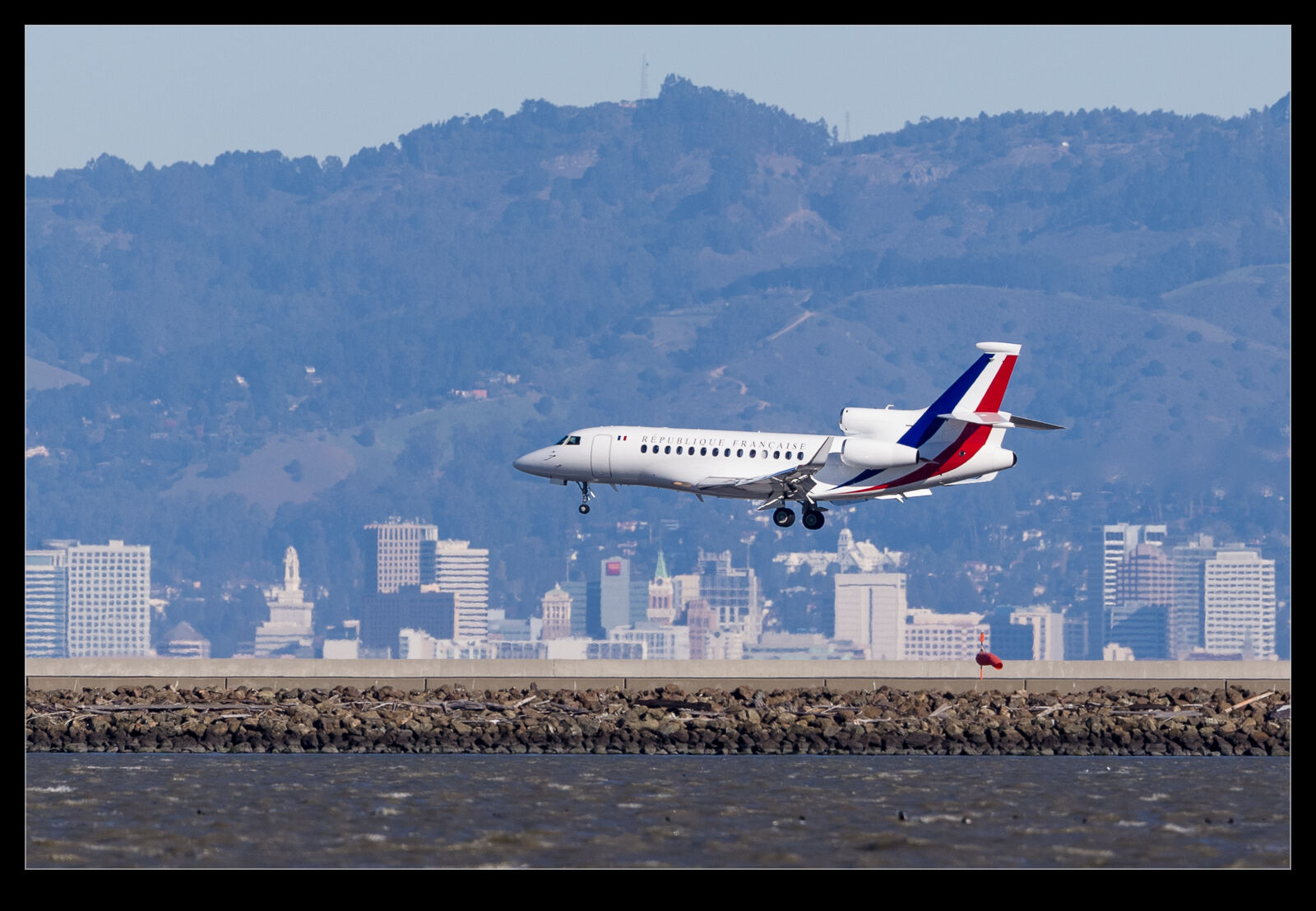 Catching a cool bizjet is nice but coming across one that is a bit special is even better. I almost missed this one. I was focused on something else when I looked up and saw something on the approach. At first I thought it was a parallel approach but I lifted the camera up to my eye and saw it was a colorful fun that was getting my attention. It was a Dassault Falcon 7X. It was in French government colors. The fin was the French tricolor. This was a cool thing to catch and quite a surprise.
Catching a cool bizjet is nice but coming across one that is a bit special is even better. I almost missed this one. I was focused on something else when I looked up and saw something on the approach. At first I thought it was a parallel approach but I lifted the camera up to my eye and saw it was a colorful fun that was getting my attention. It was a Dassault Falcon 7X. It was in French government colors. The fin was the French tricolor. This was a cool thing to catch and quite a surprise.
Spanish Fake Canopies
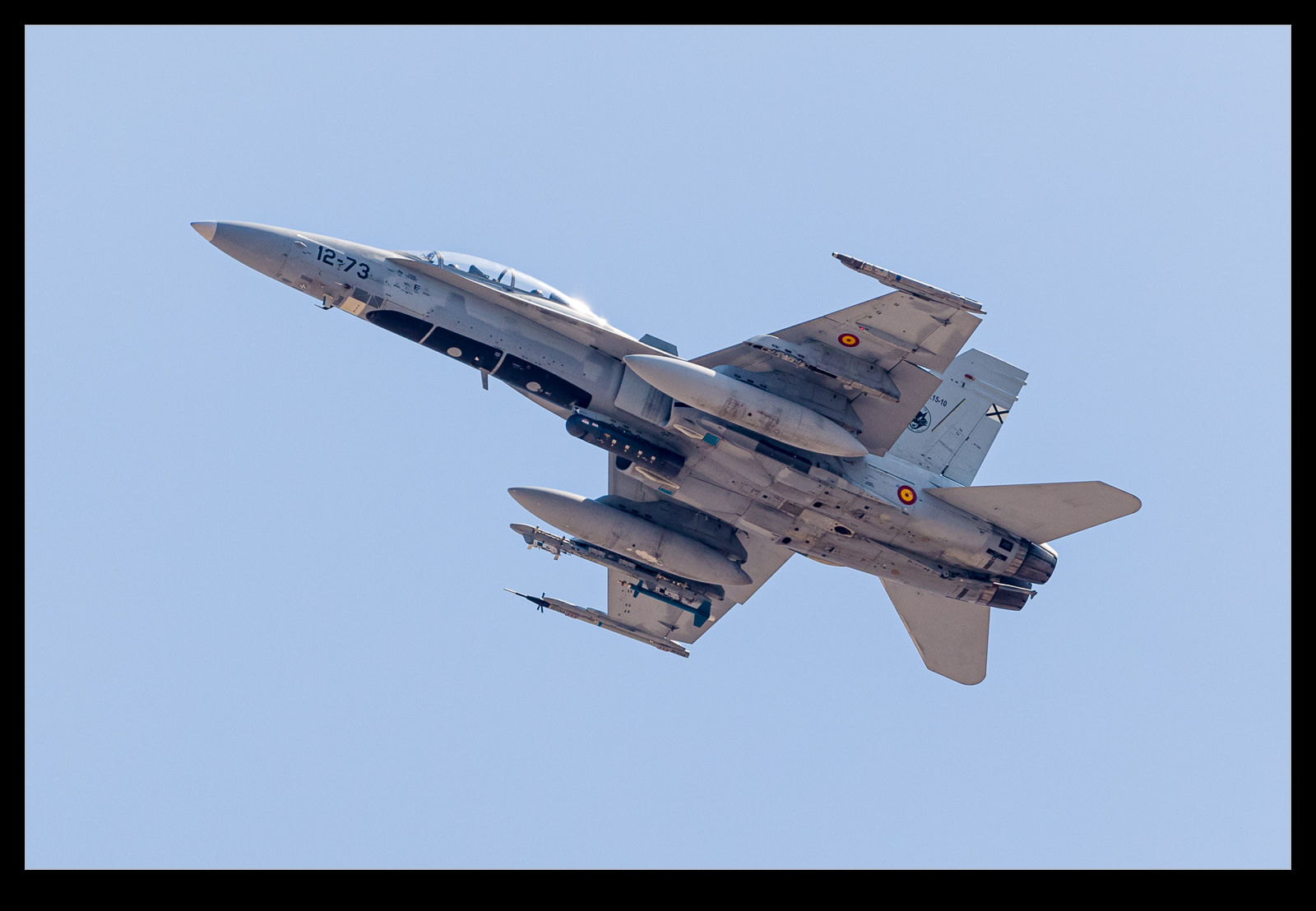 When the Canadian Hornets first came into service, they introduced the fake canopy on the underside of the front fuselage. This was a painted outline of the canopy. The idea was that, on the heat of a dogfight, the opposing pilot might be confused about the orientation of the jet and think it was coming towards him rather than away as a result of seeing this canopy.
When the Canadian Hornets first came into service, they introduced the fake canopy on the underside of the front fuselage. This was a painted outline of the canopy. The idea was that, on the heat of a dogfight, the opposing pilot might be confused about the orientation of the jet and think it was coming towards him rather than away as a result of seeing this canopy.
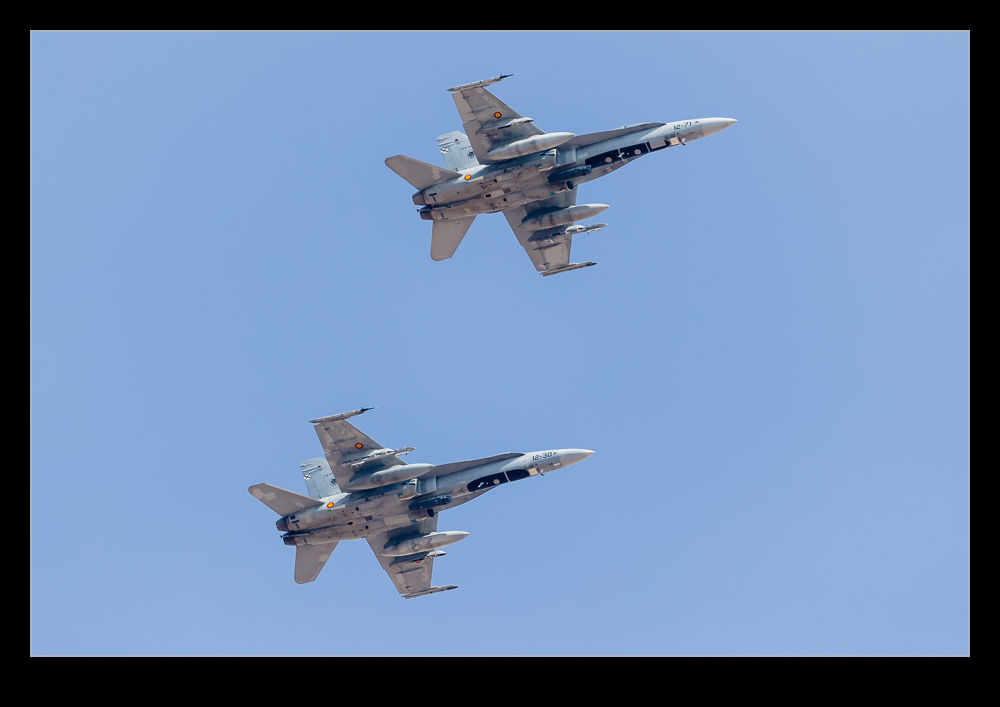 The US Hornets never had this on the fleet jets but it appears that the Spanish Air Force has adopted it for theirs (although not all of the jets are so painted). I heard a rumor that the Canadians have some rights on this and other users have to pay for it but I have no idea whether there is any truth to this or not. However, their jets certainly do have the canopies painted on the fuselage.
The US Hornets never had this on the fleet jets but it appears that the Spanish Air Force has adopted it for theirs (although not all of the jets are so painted). I heard a rumor that the Canadians have some rights on this and other users have to pay for it but I have no idea whether there is any truth to this or not. However, their jets certainly do have the canopies painted on the fuselage.

